“With Christo and Jeanne-Claude everyone felt part of the work, whatever work was being done at the time, and that is an experience that no amount of money can buy” (Adam Kaufman, Manager of the nonprofit organization “The Central Park Conservancy,” in an interview with Zornitza Kratchmarova, The hidden art of Christo and Jeanne-Claude, 2016).
With their endeavors, Christo Vladimirov Yavachev (Gabrovo, 1935 - New York, 2020) and Jeanne-Claude Denat de Guillebon (Casablanca, 1935 - New York, 2009), better known as the artistic duo Christo and Jeanne-Claude, have profoundly revolutionized the way of conceiving the work of art and its making process. In the 1960s, when the art market and gallery system was becoming more and more strongly established, they had decided not to be part of that world, refusing to be represented by any art gallery, rejecting outside funding on behalf of sponsors and self-financing their projects, thus becoming de facto the sole masters of their art making.
Even more striking was their willingness to open themselves up to the public, involving them in real participation in their projects, at a time when, in the mid-1960s, artists were becoming increasingly hermetic and conceptual. In their “wrap-arounds,” the term by which we know their works, Christo and Jeanne-Claude took off the mask of the unattainable artist, clothed in a sacred aura, to descend to the same level as the thousands and thousands of people who had collaborated over the course of more than fifty years in the realization of their undertakings. A utopia that became a reality.
Italy had the pleasure of hosting their latest realized project, TheFloatingPiers (June 18 to July 3, 2016), with Germano Celant as its director. Christo alone (his beloved Jeanne-Claude had died in 2009) managed to give some six hundred thousand visitors the illusion of walking on water. With this installation as many as 200,000 cubes, covered with 70,000 square meters of iridescent yellow fiber, connected the villages of Sulzano and Monte Isola with the Island of San Paolo on Lake Iseo. A project that landed in Italy only in 2014: in fact, it had been in the minds of the two since 1970, but designed for other sites, such as the Rio de la Plata River in Buenos Aires, Argentina, and, later, for Tokyo Bay in Japan. At both sites, as has often been the case with their works, negotiations had led to a denial of the necessary permits.
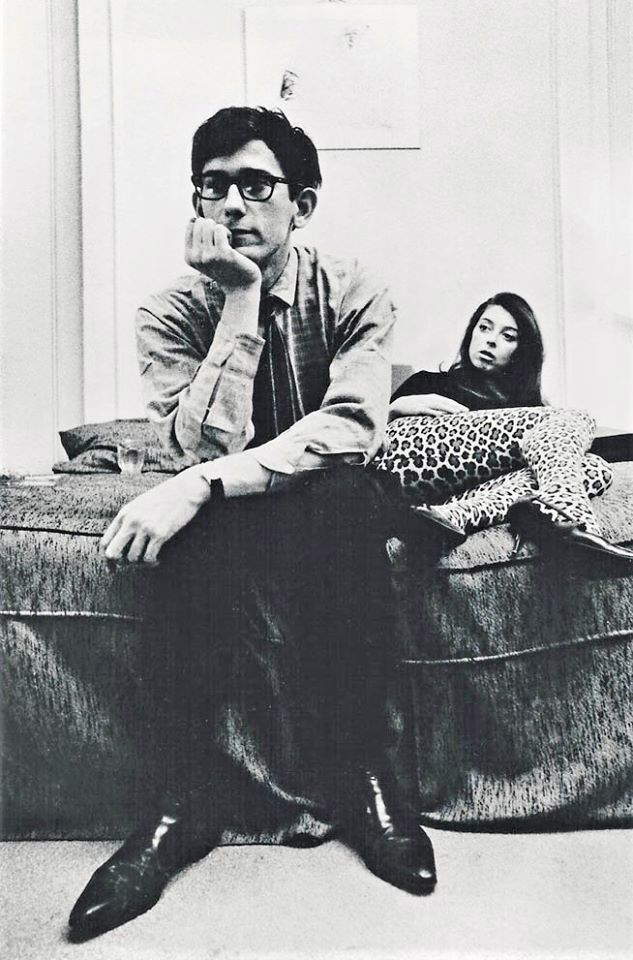 |
| Christo and Jeanne-Claude in 1964 |
 |
| Christo and Jeanne-Claude in 1976 |
 |
| Christo and Jeanne-Claude in 1995 |
 |
| Christo and Jeanne-Claude in 2005. Ph. Credit Wolfgang Volz |
 |
| Christo on Lake Iseo in 2016. Ph. Credit Wolfgang Volz |
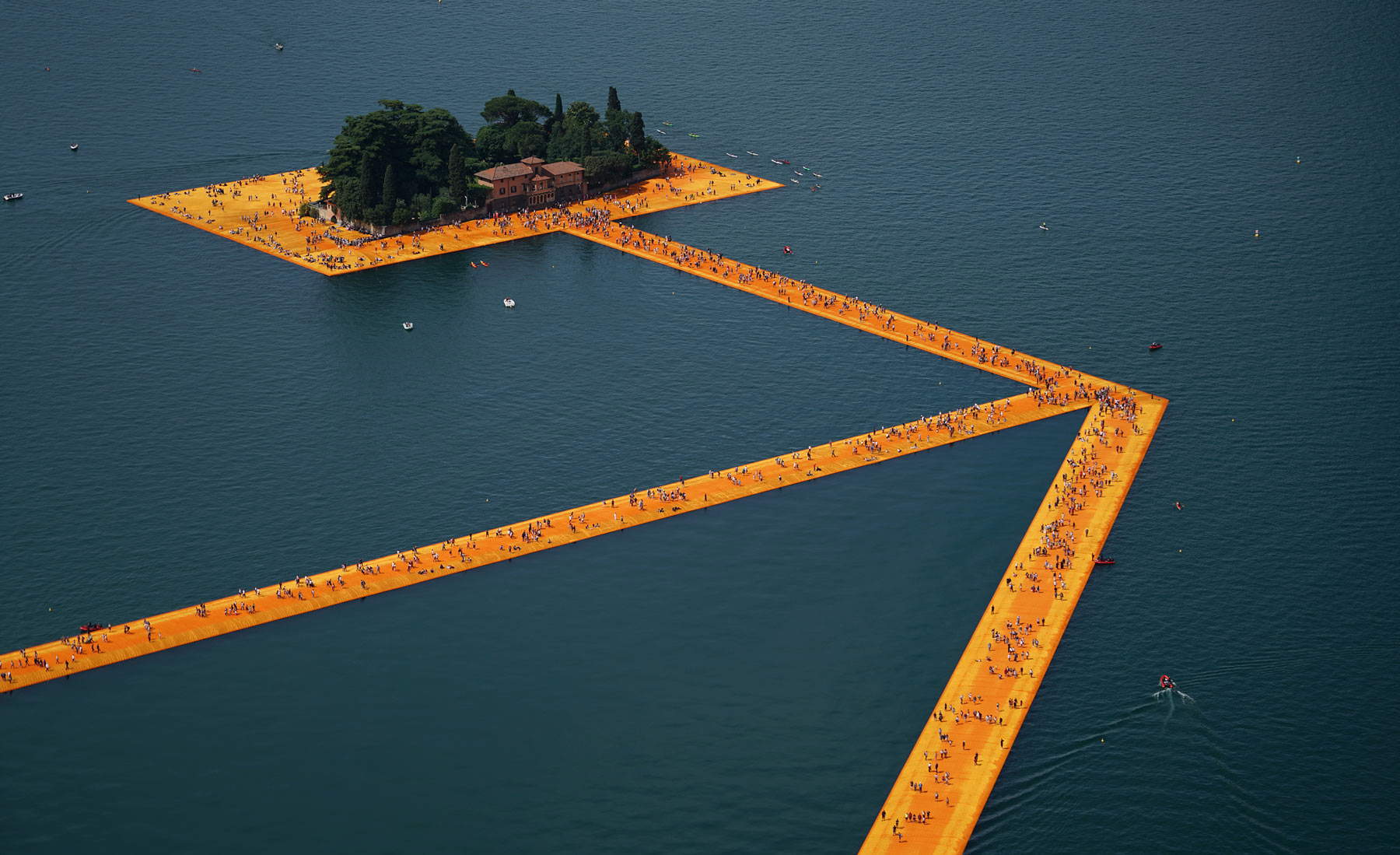 |
| Christo and Jeanne-Claude, The Floating Piers (2014-2016; Lake Iseo). Ph. Credit Wolfgang Volz |
Italy was not new to hosting Christo and Jeanne-Claude’s installations. In fact, in the 1960s, when the art world looked to the two as a transient phenomenon of an ephemeral artistic avant-garde, Italy was one of the first nations to offer the couple’s projects a chance to develop. They include the Wrapped Fountain and the Wrapped Medieval Tower in Spoleto in 1968, the Wrapped Monumet to Vittorio Emanuele and the Wrapped Monument to Leonardo da Vinci, in 1971, on the occasion of the Festival of Neo-Realism, an artistic current that Christo had initially joined, along with the likes of Jean Tinguely, César, Daniel Spoerri, Arman and Raymon Hains; and finally, the majestic “wrapping” of the Aurelian Walls in Rome, in 1974.
At the time, many critics accused Christo of “packing up” his works because he could not draw them. Instead, it was his extreme precision and dedication to drawing that made the impossible possible. One of the few people to give them confidence, back in the late 1960s, was the great art critic and curator Harald Szeemann who, in 1968, had invited them to pack the Bern Kunsthalle of which he was director. It took decades, in a strongly patriarchal art system, for both of them to be accepted as an artistic couple in which his partner Jeanne-Claude was also regarded not only as the financial manager of their projects, but also as their signatory creator. Christo, a penniless émigré portrait painter and political refugee in France from communist Bulgaria, had met Jeanne-Claude in Paris in 1958 on the very occasion of a portrait of the young woman that her mother had asked the artist to make. With the two also changed the way traditional artistic identity was perceived in favor of identifying artistic collaboration as a work itself.
Since then, the two have become inseparable and have contributed to changing forever the way of conceiving the artwork within the open landscape and urban space, but if you will, also the artwork itself. By means of wrapping, and subsequent unpacking (although the writer prefers the term “veiling”), Christo and Jeanne-Claude have given back to humans the poetic aura of everyday habitual objects. On the surface, one thinks of a simple operation of intervention in the urban or landscape fabric that leads to a change in the view of the observer. Their installations are meant to bring, to a moment of deep awareness and reflection on the triviality of the everyday, on detachment from the repetitive way of looking at reality and on the founding factor in the life of the human being, Time. “Our projects attract people who want to see them so they can say ’I’ve seen it, and if you don’t see it, you won’t get another chance. It may be gone tomorrow, just like our lives’” (from an interview of Christo with Megan O’Rourke for the Wall Street Journal on March 24, 2011). Another of the peculiarities of Christo’s and Jeanne-Claude’s works is that they are temporary, although they survive in documentary form through photographs, films and books, as well as in the substantial number of sketches , studies and drawings made for their implementation. Certainly, however, photographic documentation does not constitute an appropriate memory (the couple never authorized it as art as such) and therefore the uniqueness and unrepeatability of their projects must be considered, as stated earlier by the artist.
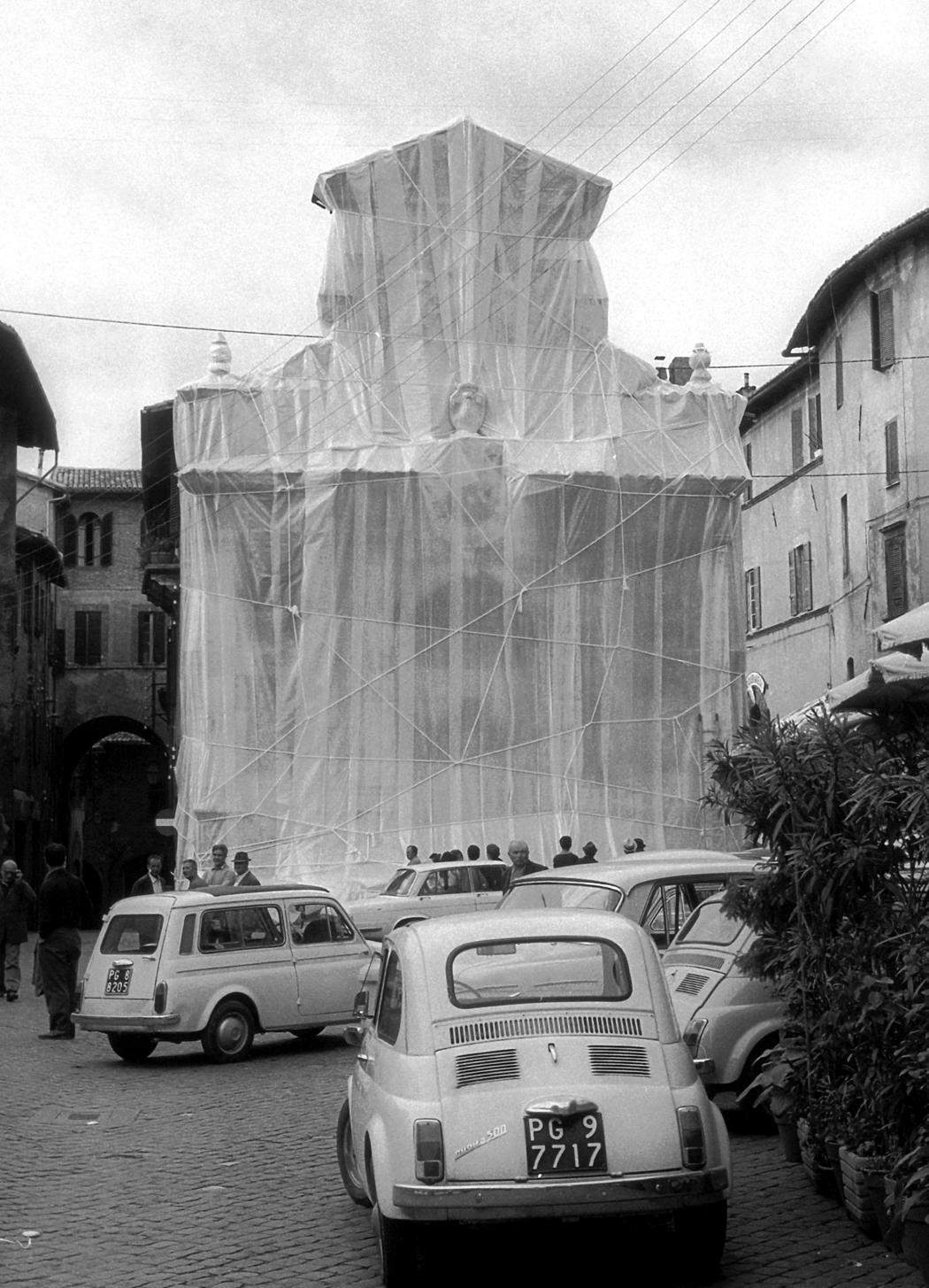 |
| Christo and Jeanne-Claude, Wrapped Fountain (1968; Spoleto). Ph. Jeanne-Claude |
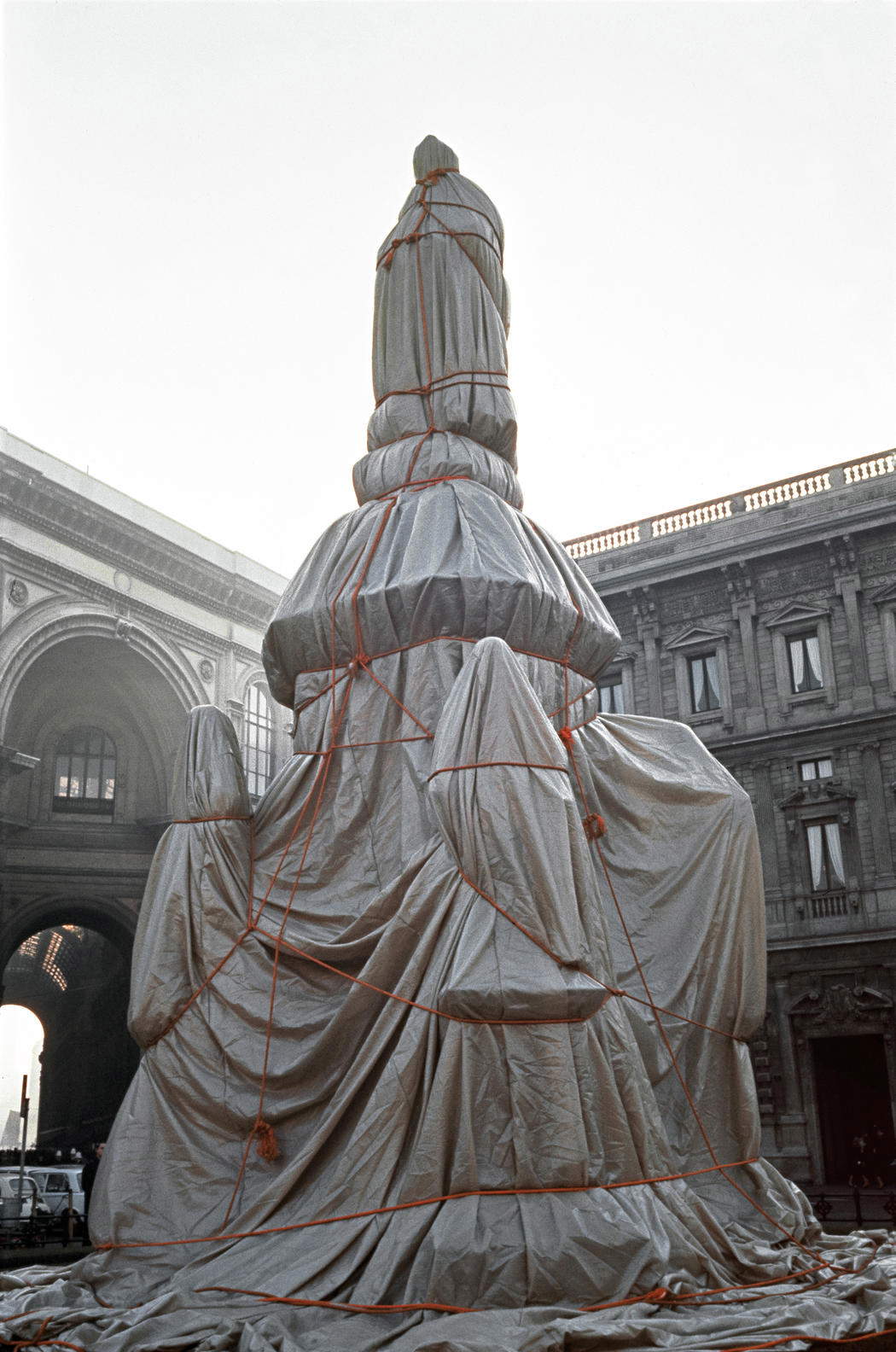 |
| Christo and Jeanne-Claude, Wrapped Monument to Leonardo da Vinci (1970; Milan). Ph. Credit Shunk-Kender |
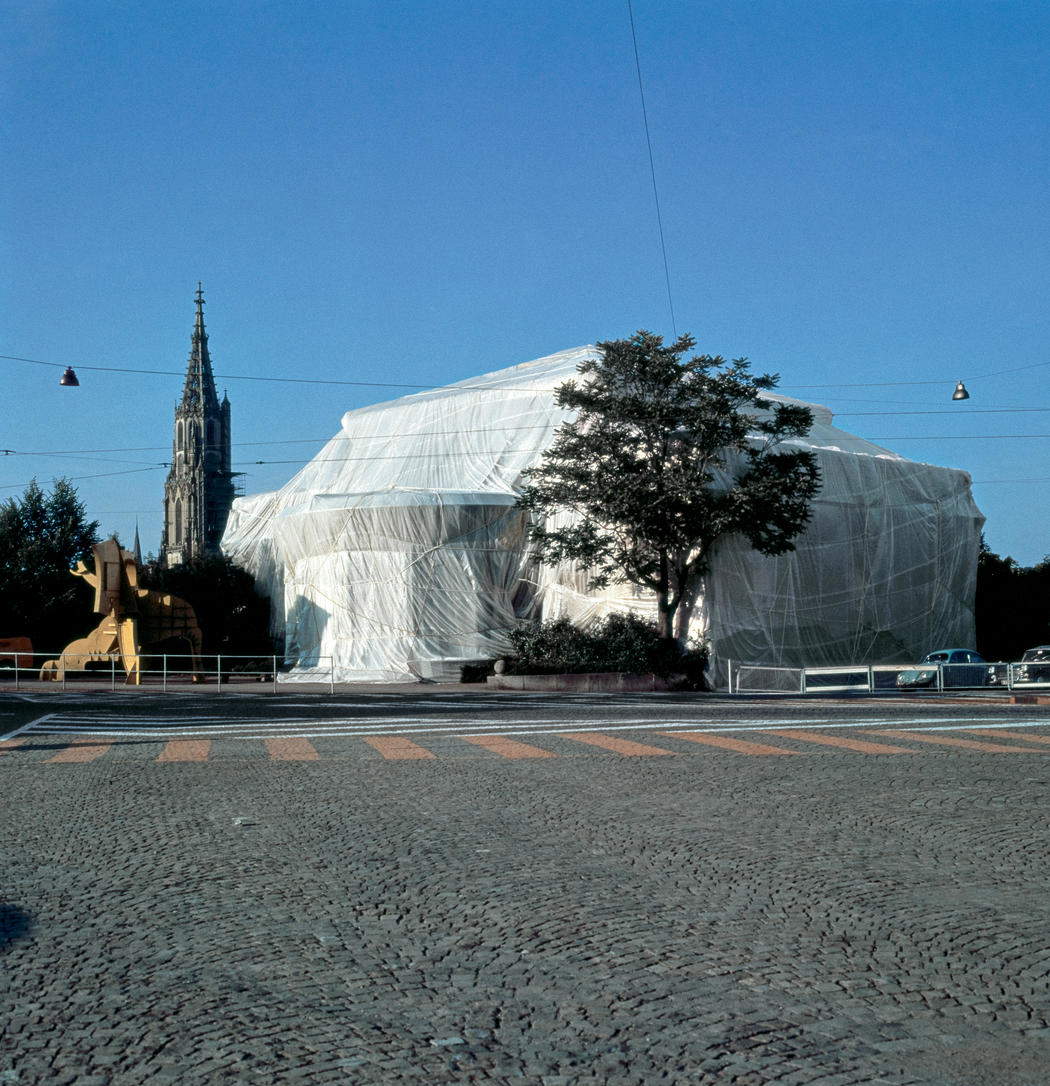 |
| Christo and Jeanne-Claude, Wrapped Kunsthalle (1967-1968; Bern) |
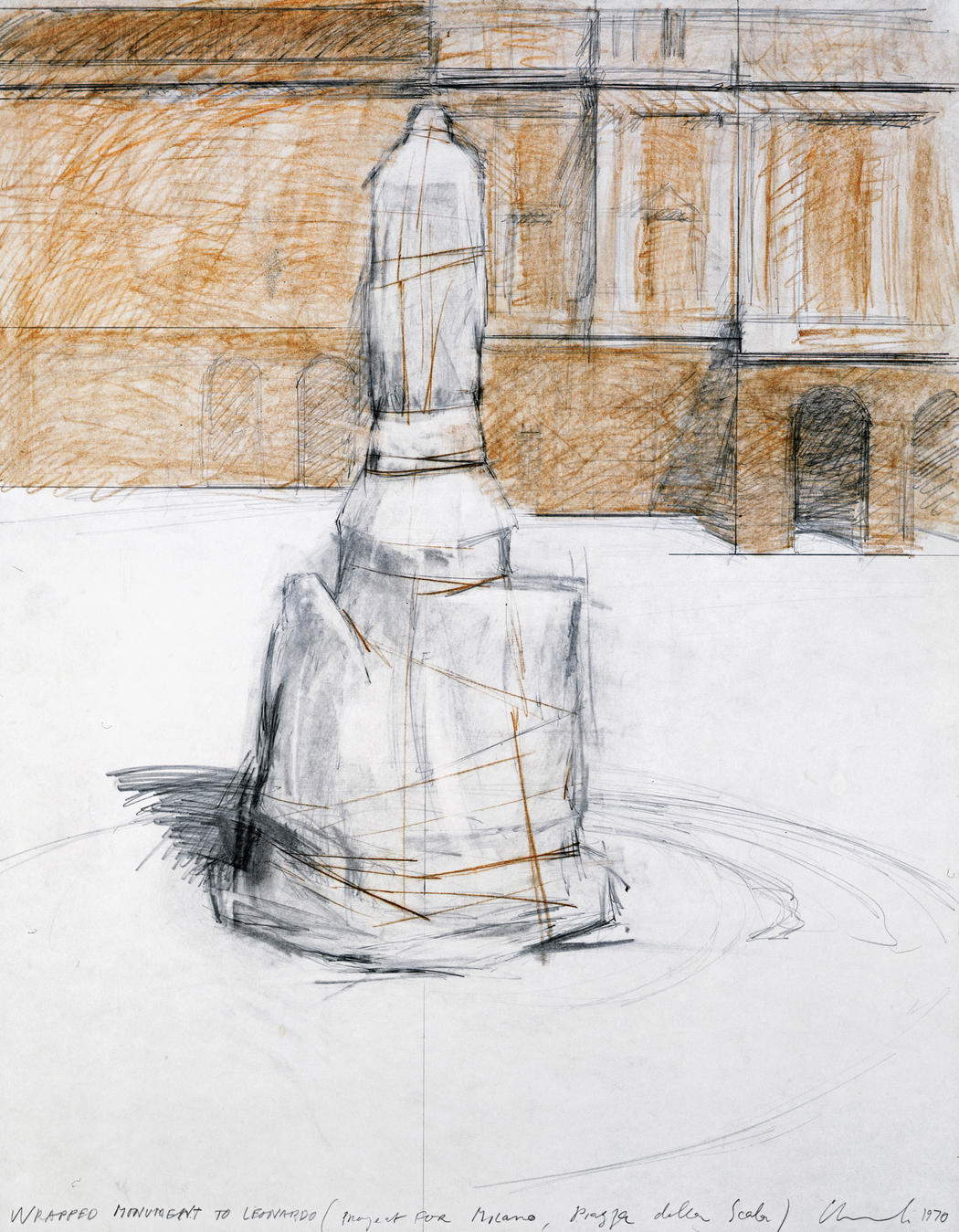 |
| Christo, Wrapped Monument to Leonardo, project (1970; pencil and charcoal on paper, 71 x 56 cm; Paul Jolles-Berne Collection). Ph. Credit Shunk-Kender |
 |
| Christo, Kunsthalle Bern Packed, project (1968; pencil on paper, 101.5 x 152.5 cm). Ph. Credit André Grossmann |
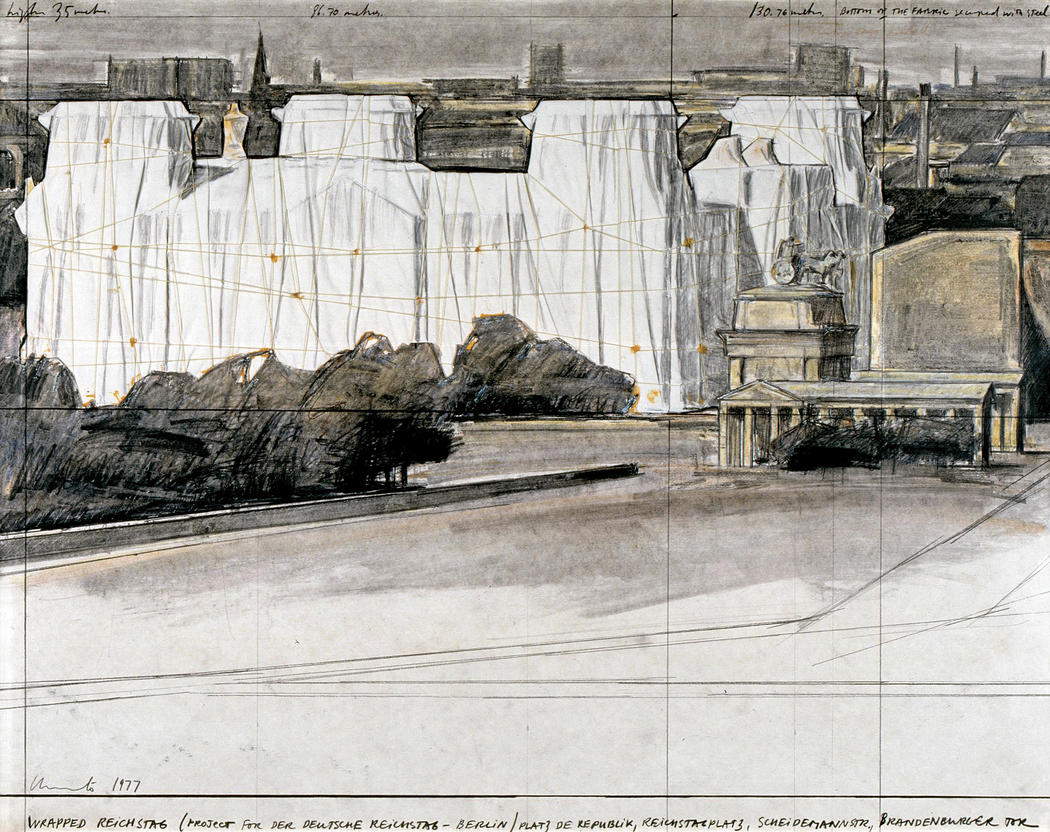 |
| Christo, Wrapped Reichstag, project (1977; pencil, fabric, string, pencil, charcoal, and pastel, 56 x 71 cm; Bonn, Kunstmuseum) |
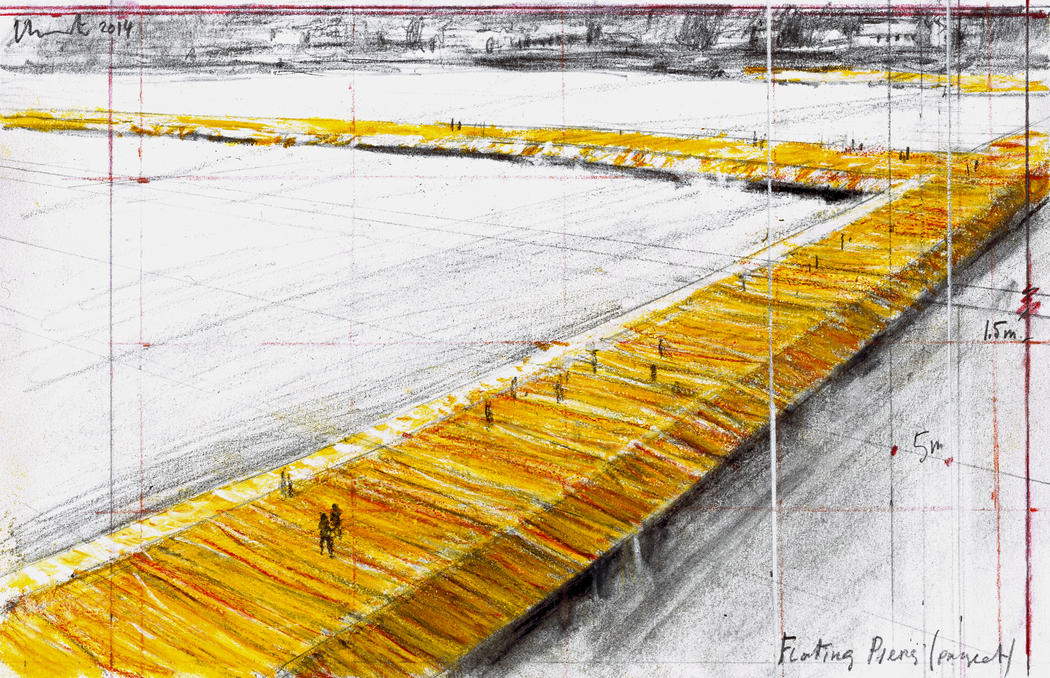 |
| Christo and Jeanne-Claude, The Floating Piers, project (2014; pencil, charcoal, and pastel on paper, 22.5 x 34.9 cm). Ph. Credit André Grossmann |
It is difficult to say which is their most successful installation. Each was the result of grueling negotiations for its realization, both on the more purely economic side and on the bureaucratic and permitting side. Here is the reason for the decades that often elapsed between the idea of the project and its realization. In the beginning, their ideas were always looked upon with much skepticism, by critics, politicians and ordinary people involved, such as when, in 1984, Chirac (then mayor of Paris) and Mitterrand (President of the French Republic), had strongly opposed the realization of The Pont Neuf Wrapped (1975-1984), in Paris.
Despite all the difficulties, each time they succeeded in completing even one of their actions they changed the modus pensandi of those fortunate and privileged to collaborate with them. From Wrapped Coast (1968-1969) in the Little Bay of New South Wales, Australia, to the poetic The Gates (1979-2005) in New York’s Central Park (the last work they did together before Jeanne-Claude’s death) the pair always managed to attract not only millions of visitors from all over the world, but collaborators who went out of their way to be part of what they called "family,“ that is, their studio team. The testimonies one reads in the texts given by those who helped bring their crazy and sublime ideas to life are from those who truly held their work in high esteem. ”They give people the opportunity to put their own spin on it, to contribute to the project, knowing exactly where those people would have a chance to shine." (Zornitza Kratchmarova, The hidden art of Christo and Jeanne-Claude, 2016.).
Various intimidations were received during the grueling negotiations or accusations of compromising the stability of the landscape where they wanted to make their installations. This was never the case. In fact, in addition to making use of recyclable fibers and materials (another founding feature of their modus operandi), the duo has always been, if you will, ethically correct both in the daily payment of all the people involved in their projects (and let us recall that they themselves bore the entire financial honor) and in the constant presence of specialized professionals, including biologists, oceanographers, ecologists, and animal experts, to name but a few.
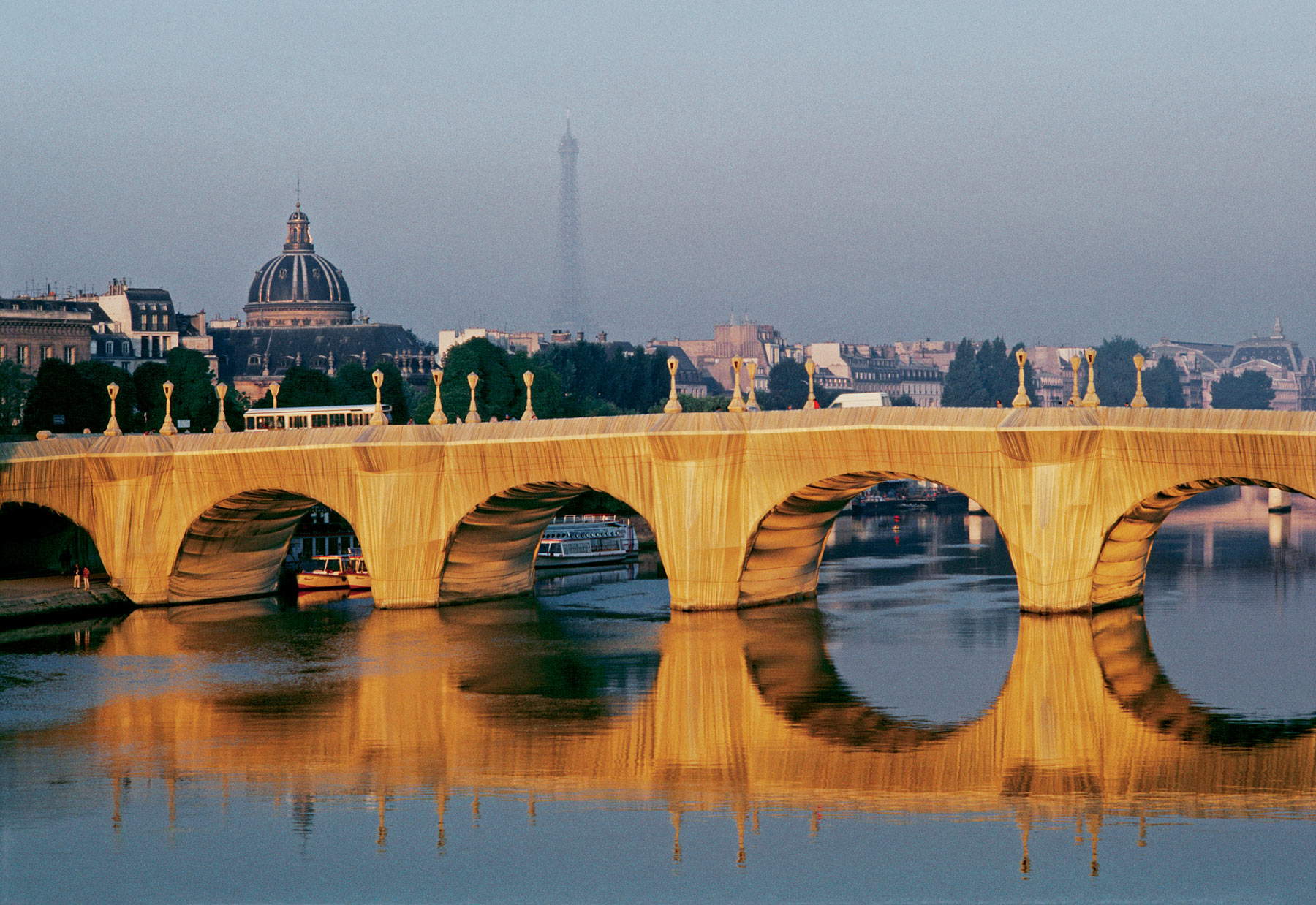 |
| Christo and Jeanne-Claude, The Pont Neuf Wrapped (1975-1985; Paris). Ph. Credit Wolfgang Volz |
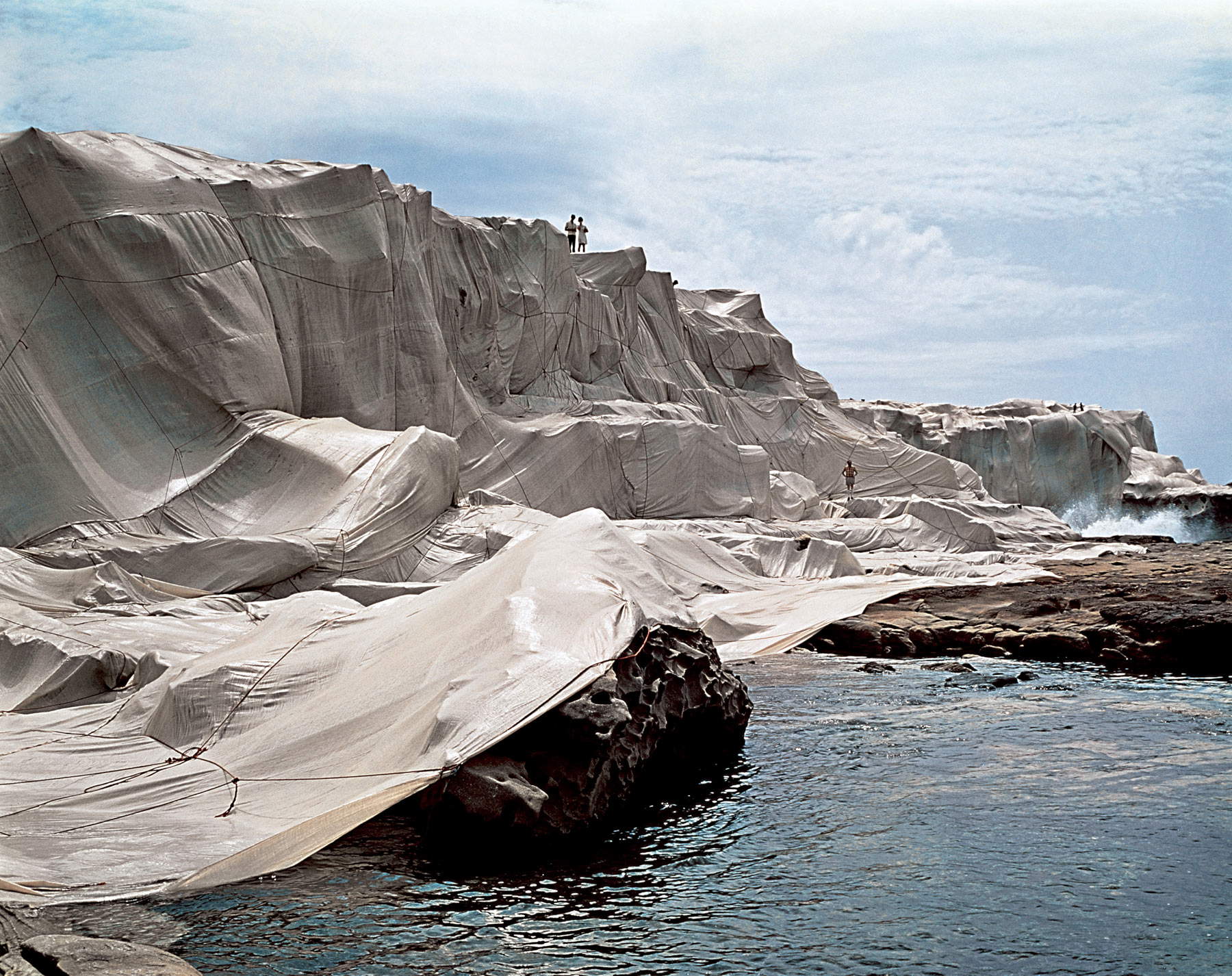 |
| Christo and Jeanne-Claude, Wrapped Coast (1968-1969; Little Bay, Sydney) |
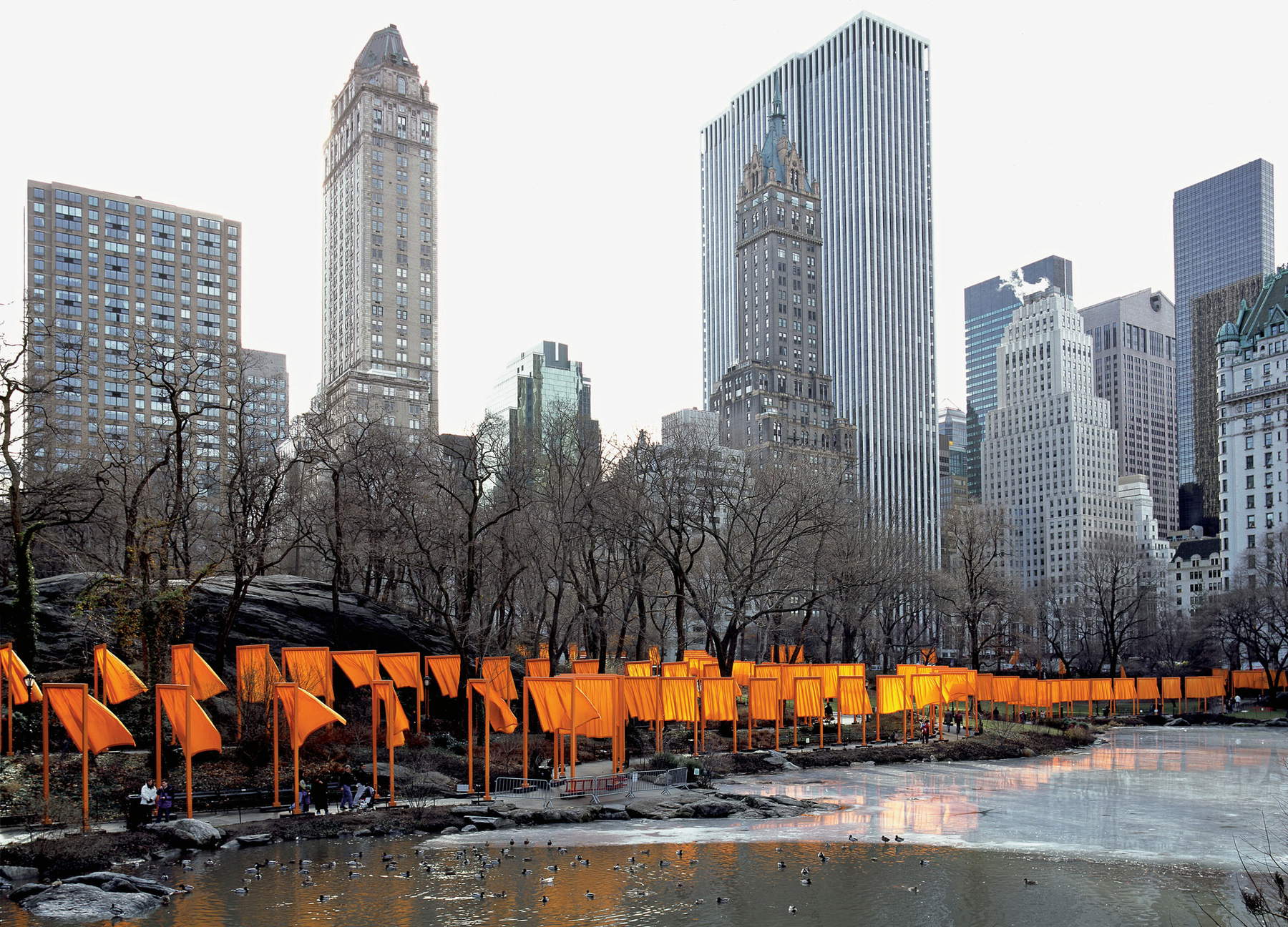 |
| Christo and Jeanne-Claude, The Gates (1979-2005; New York, Central Park). Ph. Credit Wolfgang Volz |
Certainly one of their most complex works in terms of negotiations, permits and its realization was Wrapped Reichstag (1971-1995), or the wrapping with more than 100,000 square meters of textile fiber and nearly 16 km of rope of the Reichstag Building (now the seat of the German Bundestag) from June 24 to July 8, 1995. The installation was seen by more than five million visitors at a total cost of fifteen million dollars. With Wrapped Reichstag, Christo and Jeanne-Claude wrote an important page in art history, achieving international fame and doing the most unthinkable thing that could have been done, which was to wrap up history itself, both Christo’s personal history and the history of Germany today.
This monument is of special importance to the Bulgarian people. For history has it that in 1933, the Reichstag had been burned down as a result of arson, and one Georgi Dimitrov (at the time a German official and later, during Soviet Communism, prime minister of Bulgaria) had been arrested on charges of involvement. During his trial in Leipzig, the official had succeeded in proving his innocence and indeed arousing the suspicion of senior members of the Nazi party. Of course, in communist Bulgaria, this story had become legend and was studied in school as an event of great significance to Bulgarian history. Christo, who had been a political refugee for almost twenty years, had had the desire to be able to pack with his own design the symbol of East-West world relations at the time of the Cold War, namely the Reichstag in Berlin. On this occasion, too, the pair of artists saw themselves against the nation’s most influential political figure, namely Helmut Kohl, who as early as 1985 had expressed all his displeasure about the wrapping of this monument. The installation was so successful that at the next request to extend the project, the artists responded with a resounding denial, in line with their belief in Father Time.
 |
| Christo and Jeanne-Claude, Wrapped Reichstag (1971-1975; Berlin). Ph. Credit Wolfgang Volz |
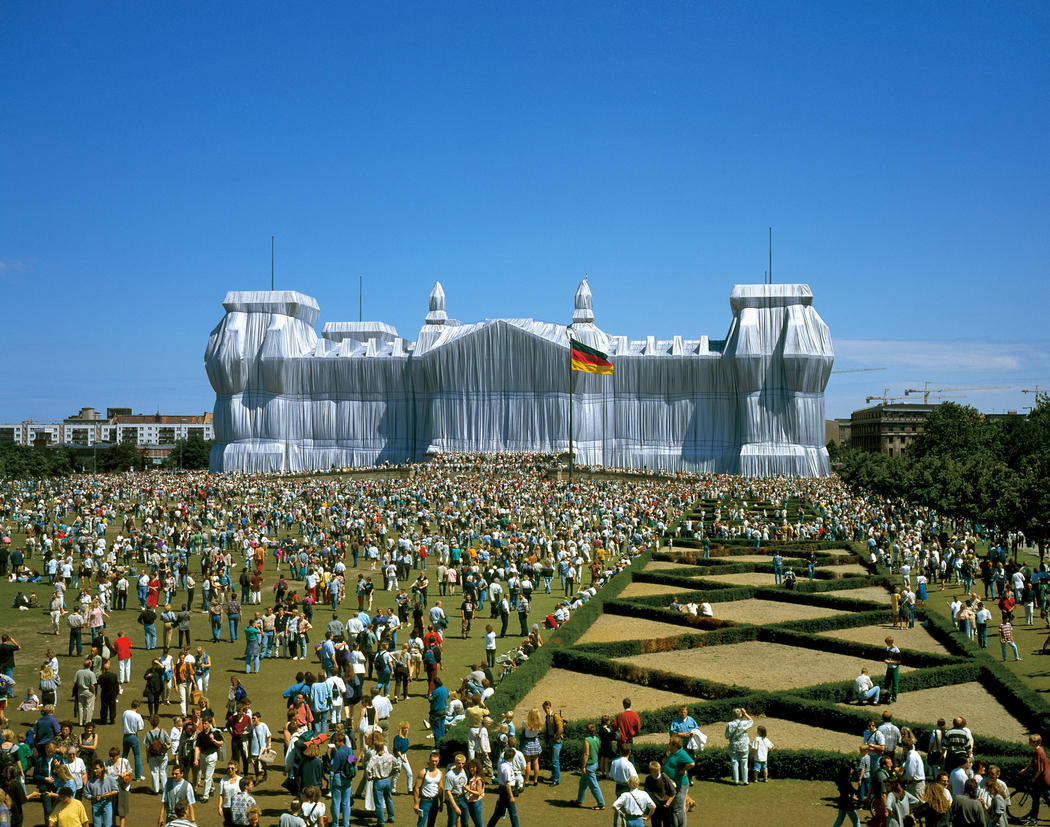 |
| Christo and Jeanne-Claude, Wrapped Reichstag (1971-1975; Berlin). Ph. Credit Wolfgang Volz |
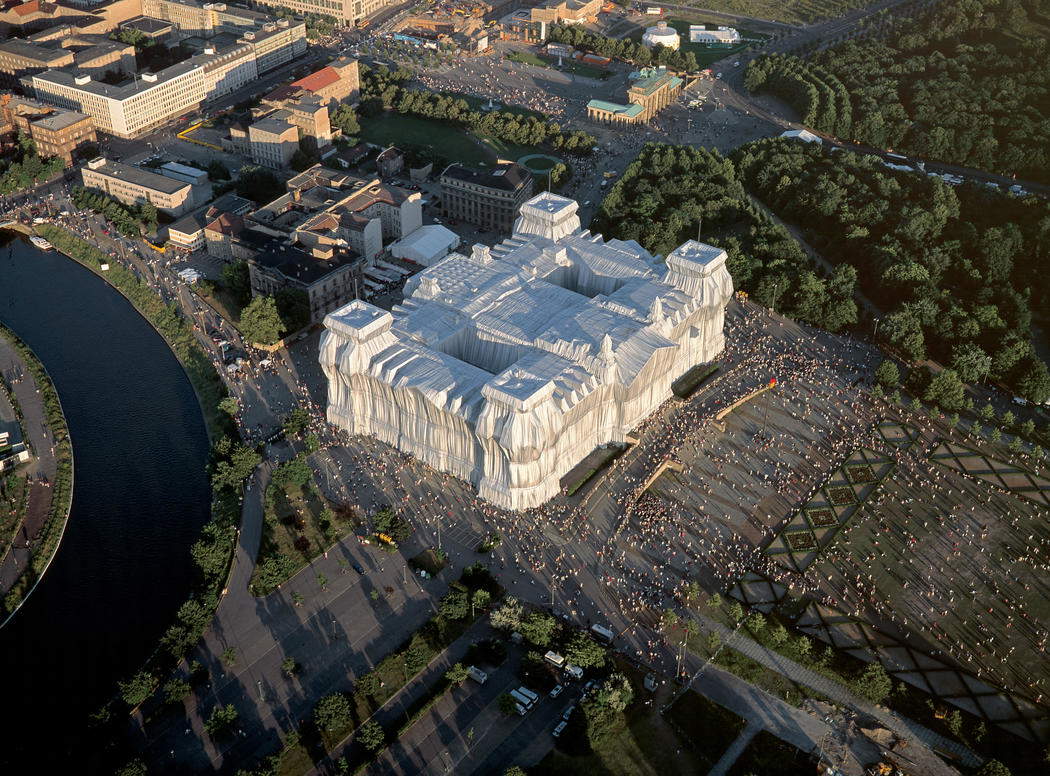 |
| Christo and Jeanne-Claude, Wrapped Reichstag (1971-1975; Berlin). Ph. Credit Wolfgang Volz |
There are several works that, unfortunately, they have not been able, to date, to realize. These include the Mastaba in Abu Dhabi, which was supposed to be the only permanent sculpture among those they made, and Over the River, a project that the two would have liked to have seen realized in Arkansas and which features fiber panels suspended over the waters for a length of almost sixty-eight kilometers, interrupted by bridges, rocks, and trees, with variations depending on the course of the water. Not the least of these is their Wrapped Arc de Triomphe installation in Paris that had been scheduled for this late summer, but due to the current pandemic will be able to be visited between September 18 and October 3, 2021.
The contemporary art world owes much to Christo and Jeanne-Claude. Thanks to them, we have been confronted with a new meaning of the word “art,” for which “artist” is not only those who make and make visible their works within four walls, a gallery, an apartment or a studio. An artist is also one who lives and operates outside of any three-dimensional space, and a work of art is anything that empathetically engages the public from its idealization and realization.
Warning: the translation into English of the original Italian article was created using automatic tools. We undertake to review all articles, but we do not guarantee the total absence of inaccuracies in the translation due to the program. You can find the original by clicking on the ITA button. If you find any mistake,please contact us.